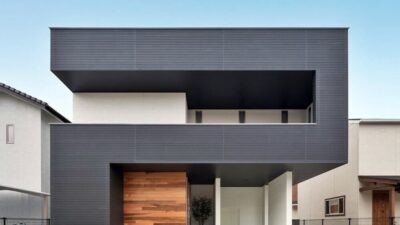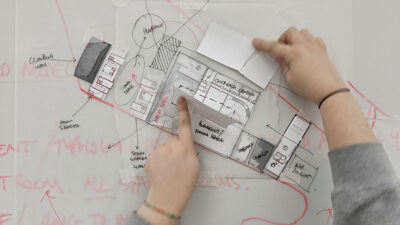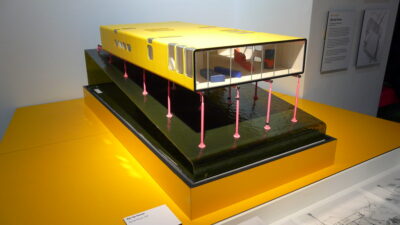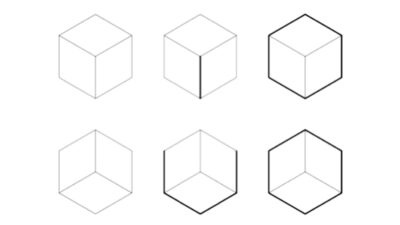Architecture transcends mere construction; it’s an art form where concepts play a critical role in shaping spaces. Understanding these concepts is not just about grasping their aesthetic appeal but recognizing how they embody functionality, experience, and innovation.
This article delves into what constitutes an effective architectural concept, exploring how these foundational ideas influence the creation of memorable and functional spaces.
Challenge in Grasping Architectural Concepts
Many architecture students find it challenging to comprehend and articulate what constitutes an effective architectural concept. This difficulty often stems from the abstract nature of these ideas. In academic settings, especially during the initial stages of study, the concept of a ‘good’ design can be elusive. It’s not uncommon for students to struggle with this, and seeking clarification can sometimes be intimidating.
Essence of a Concept
At its core, a concept in architecture is an intangible idea that captures the essence of a design. It’s an abstract expression that transcends literal interpretations, embodying the designer’s vision and the experiential journey of users.
While materials, layouts, and other physical aspects are crucial, they alone do not define a concept. Instead, a concept emerges from the synergy of all these elements, creating a unique and impactful design.
What a Concept Is Not
To further understand what an architectural concept entails, it is helpful to outline what it is not:
- Beyond Basic Elements: While a design integrates various elements like site analysis, typologies, and materials, these are not the concept itself. They are tools and building blocks that aid in expressing the overarching idea;
- Common Misconceptions: Often, students mistake site conditions, typologies, user characteristics, or material choices for concepts. However, these are merely aspects that contribute to the broader idea. Concepts are more about how these elements are uniquely synthesized in a design.
Examples of Misinterpreted Concepts:
- Site Conditions: Elements like tree clusters or sun paths are site conditions, not concepts;
- Design Typologies: Identifying a structure as a ‘modern hospital’ or ‘vertical school’ describes its typology, not its conceptual basis;
- Material Choices: Selecting materials such as timber or concrete is a decision in the design process but does not constitute the concept.
The True Nature
A concept in architecture is essentially the soul of the project. It is an idea that binds all elements together, creating an identifiable experience and emotion for those interacting with the space. This idea can be:
- A Single Overarching Theme: Sometimes, a concept is a clear, dominant idea that guides the entire project;
- A Collection of Connected Ideas: In other instances, a concept may be a tapestry of smaller ideas woven around a central theme;
- Evolving Through Exploration: The development of a concept can be an iterative process, where ideas are tested and refined over time.
The Key Role
- Response to Context: A concept often emerges as a response to the project’s context, including site, user needs, and functional requirements;
- Expression Through Elements: It is articulated through the use of materials, design principles, and technological innovations.
Understanding and mastering architectural concepts is a journey of exploring the intangible essence of design. It’s about how ideas, emotions, and experiences are intricately woven into the fabric of physical spaces, making each project unique and impactful.
The Significance in Architectural Design
The role of a concept in architectural design is to establish a coherent framework that guides the entire design process, influencing decisions at every level. This framework ensures that each element of the structure and its spaces aligns with the overarching vision, creating a harmonious and impactful experience.
A well-developed concept is not merely a superficial layer; it is intricately woven into every aspect of the design – from the smallest detail in a sketch to the selection of materials and overall spatial organization. This meticulous attention to detail ensures that the final structure is a physical embodiment of the concept, offering a rich, immersive experience to its users.
Key Functions of a Concept:
- Guiding Framework: It acts as a blueprint, steering design decisions and ensuring consistency;
- Detail Integration: Every detail, whether it’s a drawing line or material choice, reflects the concept;
- Experience Shaping: The concept dictates how users perceive and interact with the finished space.
Origin of Architectural Concepts
Concepts in architecture are born from a thorough understanding and analysis of various design factors. The process involves extensive research and exploration of the site, user needs, project brief, and potential materials and technologies.
Architects look for patterns, connections, and relationships on different scales – from the overarching context of the site to the minutiae of user interactions.
Steps in Concept Development:
- Site Analysis: Examining site conditions, identifying patterns, and understanding the local context;
- Typology Study: Investigating similar structures to discern best practices and common pitfalls;
- Program Analysis: Understanding functional relationships and patterns in the intended use of the space;
- Brief Analysis: Delving into the project’s vision and aspirations to align the design accordingly;
- User Research: Engaging with potential users to comprehend their needs and preferences;
- Material and Technological Considerations: Evaluating the suitability of various materials and technologies for the project;
- Idea Generation: Concepts often emerge organically from this comprehensive research phase.
Concept Examples:
- Contextual Response: A design concept might arise from the site’s characteristics, user profiles, or project requirements;
- Inquisitive Approach: Asking questions like “How can architecture enhance user experience?”;
- Provocative Ambitions: Developing concepts that challenge conventional design paradigms.
Navigating Conceptual Challenges
Grasping and mastering architectural concepts is a skill that often requires time and experience to develop. For many students, this process involves a journey of discovery, experimentation, and sometimes, confusion.
It’s common for students to stumble upon a well-received concept without fully understanding its appeal. The journey to conceptual mastery is varied: some concepts emerge effortlessly, while others require more effort and refinement.
Strategies for Conceptual Mastery:
- Observation and Analysis: Pay attention to successful projects and understand why their concepts work;
- Learning from Precedents: Study exemplary concepts in architecture to grasp their underlying principles;
- Persistence and Experimentation: Continue exploring and refining concepts, even when the process is challenging;
- Community Learning: Engage with peers to exchange ideas and insights on conceptual development.
The Evolution of Architectural Concepts
Architectural concepts have evolved significantly over time, reflecting changes in technology, society, and environmental awareness. This evolution has led to a diverse range of conceptual approaches in contemporary architecture.
Contemporary Conceptual Approaches
- Sustainable Design: Concepts prioritizing environmental responsibility and resource efficiency;
- User-Centric Design: Focusing on user experience, accessibility, and inclusivity;
- Technological Integration: Incorporating advanced technologies for smarter, more adaptive structures;
- Cultural and Historical Reverence: Designs that respectfully integrate and celebrate cultural and historical contexts.
The Impact of Technology on Architectural Concepts
The advent of new technologies has significantly influenced the development of architectural concepts. With tools like advanced computer-aided design (CAD) software, virtual reality, and sustainable materials, architects can explore more complex and innovative design solutions.
Technological Influences on Concept Development:
- CAD and 3D Modeling: Enabling architects to visualize and refine complex concepts with greater precision;
- Sustainable Technologies: Facilitating the integration of eco-friendly and energy-efficient elements into design concepts;
- Virtual Reality: Allowing for immersive experiences of conceptual designs, enhancing understanding and decision-making.
Conclusion
This article has explored the multifaceted nature of architectural concepts, highlighting their role as the guiding essence of design. From the initial stages of understanding a site and its context to the integration of user needs and technological advancements, concepts shape the entire architectural process. They are not static ideas but evolve with societal changes and technological innovations.
Mastering the art of concept development is crucial for any architect, as it not only informs the design process but also enriches the final structure, making it resonate with its users and environment. As we have seen, the journey to conceptual mastery is as diverse as the field of architecture itself, requiring persistence, creativity, and a willingness to explore new paradigms.











